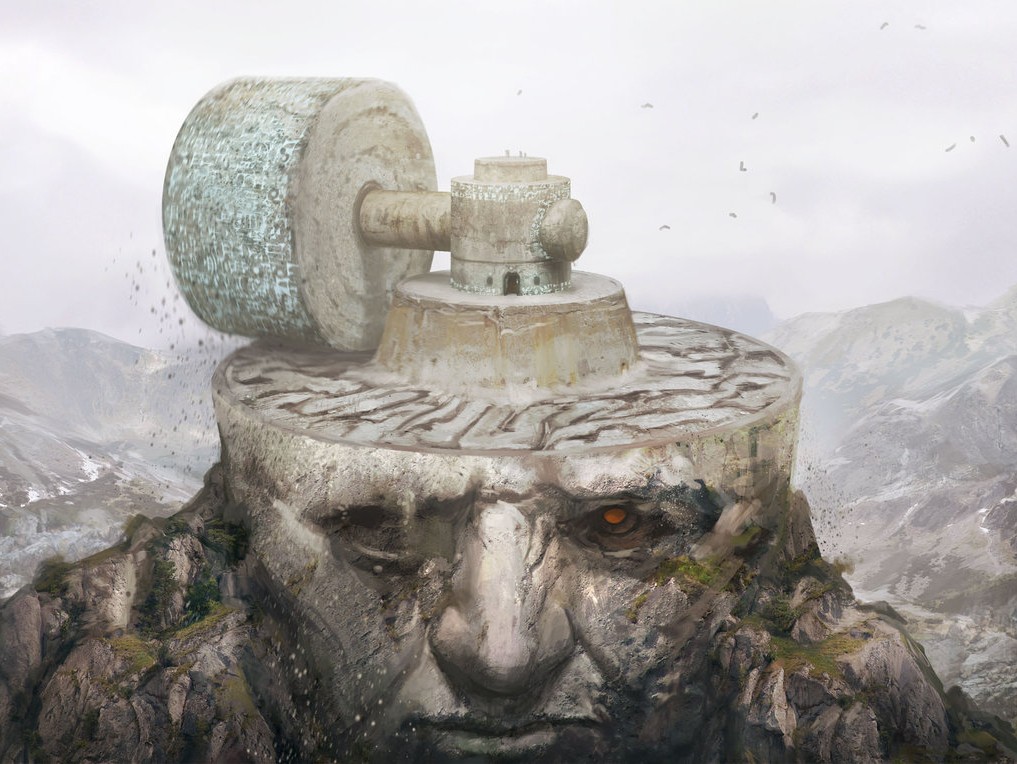Howdy Budget Brewers! It's that time of the week for us to take a gander at some of the more budget options we can play at our local FNM's. While our main goal is ultimately to just have some fun, it's all gravy if we're able to win some matches as well. It's true, janky combo's are my bread and butter but I've been known to sprinkle in a dash of control or a smidgen of aggro. Then, sometimes a smattering of something in between the two. We tackle new and exciting ways to play that's easy on our wallet, and can have some fun at the local level!
This week, I have no words for the intro, besides a little picture. They say a picture is worth a thousand words, well.... this should say them all.
Rule 104.3c “If a player is required to draw more cards than are left in his or her library, he or she draws the remaining cards, and then loses the game the next time a player would receive priority. (This is a state-based action. See rule 704.)
We've never done a straight milling strategy. The time is overdue. We're going to dive into the alternative win-condition and try to deck our opponent to win the game. We're even including a special combo finish to help edge out our opponent and win quicker.
Mill, while usually not being seen as very competitive is a favourite among kitchen table players everywhere, and a perfected non budget list has been known to break into Day 2 of Grand Prix's. Mill also has a deep, rich history tracing all the way back to Alpha, even before Millstone was printed.
Why “Mill”?
Why's it called Milling? Well, it seems a rule of thumb in Magic slang is born when a card gets released that does something that no other card had previously done. Hence Millstone used to be called “Millstoning” and then it was just abbreviated down to “Milling.”
Always be Milling
As mentioned earlier, the history of milling actually came before Millstone was ever even printed. Even in Beta testing of Magic there were decks that won by decking the opponent. Charlie Catino one of the original play testers of the game played a deck where he kept using Timetwister to keep shuffling graveyards back into libraries. He would deck you by playing Swords to Plowshares to remove all your creatures from the game, making your library smaller, so he would eventually deck you.
The original creator of the game Richard Garfield made us lose the game when we ran out of cards simply to answer the question “what happens if I run out of cards in my deck?” Back in the early days there wasn't a match clock to watch, and games tended to run long. The decking rule just helped make sure they didn't run even longer.
Once Millstone was printed in Antiquities it gave players a new way to aggressively win the game. From Alpha to Homelands there were exactly 4 cards that milled for the sake of milling.
Eventually more and more cards came about that milled, and it was an espically strong theme in Ravnica, where one of the most powerful mill spells was created Glimpse the Unthinkable. There were even control strategies where the player would just win with Nephalia Drownyard.
There's lots of ways to go about building a Mill deck, and when you look at a mill deck, it's a lot like a less powerful burn deck. Our mill spells don't deal with threats in the traditional way, but for 1 mana we deal 5 “damage” to our opponent by removing 5 of his cards from the library.... and you thought the 3 for 1 Lightning Bolt was good, pft. Our deck costs around $90 US bucks.
For our build we opted for a powerful combo to end the game.
With Duskmantle Guildmage and Mindcrank in play, all we need to do is pay 2 mana and either play a mill spell, or damage our opponent via Gut shot and it sets off a chain reaction where each time they mill a card they get a point of damage which results in them milling another card. So, I guess if we win this way we don't technically win through mill, unless our opponent Melira combo'd or is playing Soul Sisters, we still win the game in mill fashion.
The Mill
All of these give us insane value for mill to mana. Most of which is probably Mind Funeral which I've seen hit up to 20 cards with a bit of bad luck for the opposing player. If you're facing a land light deck, this is going to huge value.
Heavy Hitters
Traumatize is definitely the better of the two, eliminating half your opponents deck for 5 mana, but a well timed Psychic Spiral can be game ending. Or, just imagine if you Traumatize yourself and then Psychic Spiral your opponent?
Psychic Spiral was a way for control decks to break the mirror in Standard during Return to Ravnica, and I'm curious about trying it out in a mill deck like this one.
Stabilize
Crypt Incursion is going to get you back some well needed life points versus aggressive decks, and, there's nothing wrong with a solid removal spell.
Now let's take a look at a U/B Mill deck that made Day 2 of GP Los Angelos with a record of 8-0-1.
This one costs around $680.
That's all I have this week. Thanks for joining me while I try to Untap the Multiverse!
Have an idea for something you'd like me to brew up? Give me a shout in the comments!
Or in the usual social media ways -
Twitter - @maibuddha




